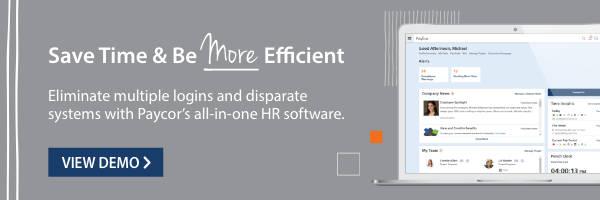First impressions matter. When you start a new job, you probably pick out a special outfit for your first day, look up the name of your department head, and make a list of questions to ask. Employers should put in the same effort – if not more – to make new hires feel welcome.
A good employee onboarding process sets the tone for your working relationship. Don’t make new employees wait weeks to get their work laptop or waste time filling out a mountain of paperwork. These messy, time-consuming processes are annoying at best. At worst, they can increase rates of employee turnover.
An effective onboarding program keeps your employees engaged from day 1. These activities should be energizing and purposeful, instead of feeling like busy work. Think of every touchpoint as an opportunity to set your new hire – and your whole team – up for continued success.

Begin onboarding before their first day.
Onboarding should start the moment your new hire signs their contract. It’s important to strike a balance here. Don’t ask them to work for free before their official start date. Do send them details about what to expect once they begin work. Your employee welcome kit might include:
- A schedule of their first day or week on the job
- A list of onboarding activities they’ll participate in
- The employee handbook
- A map of the office
- Instructions for how to log onto their work computer
- An org chart outlining current employees, highlighting people they’ll work with frequently and who to contact if there’s an issue
- A calendar of important dates such as pay days, work closures, observed holidays, and quarterly or annual deadlines
It’s safe to assume your new hire will have questions about whatever information you send them. Make sure they know who to contact for more details.

Clearly document logistics.
This step doesn’t just improve onboarding; it makes every employee’s life easier. Create clear documentation about topics like payroll, benefits, internal deadlines, and similar. Make sure every employee knows where to find these documents. Then, send a company-wide email every time you update them. This might seem like a lot of work at first, but in the long term, it saves time for everyone. Instead of answering hundreds of individual emails about your changing benefits package, you can just direct everyone on your team to a single source of truth. And when you welcome a new employee, they’ll have instant access to all this important information.

Set clear expectations.
Poor communication breeds disappointment. Even before you start recruiting, you can make a clear and specific list of what you need from a new hire. Will they have the same schedule every week, or do you need them to be flexible? Do you expect them to work weekends or holidays? How often will they get paid? Let them know exactly what you expect from them, and make sure your needs match up before they start work.

Make a formal introduction.
Welcoming a new hire is a big deal – for your company, and especially for the people on their immediate team. While these employees might not have a say in the hiring process, they’ll feel the effects of your decision every day. Ask your new hire for a bio detailing any information they’d like to share, from their work history to their love of knitting. Then share it with the team to get them excited about their new colleague.

Open lines of communication.
With everyone’s permission, introduce your new hire to their closest coworkers before their official start date. This could happen through an email thread, a private LinkedIn group, or a dedicated Slack channel. When you give new coworkers the chance to get to know each other, your new employee will start to get a feel for your company’s culture.

Match them up with a buddy.
This could be a seasoned employee or someone with their same start date. Either way, pairing each new hire with another person gives them someone to rely on for emotional support at work. Whether or not this becomes a lasting friendship, they’ll have at least one built-in connection to someone else at the company.

Schedule regular 1-on-1s.
When you start a new job, it takes time to get your bearings. Over their first few weeks or months with your company, expect your new hire to come up with more and more questions. Encourage their curiosity by setting up recurring meetings where they can ask questions without fear of judgement. Ideally, these 1 on 1s should happen with their direct supervisor or someone in their department. This also gives them the chance to build relationships with the team, make suggestions, and get direct feedback about their work.

Tailor the process to each individual employee.
Look for ways to customize the onboarding process for each person who joins your team. Success isn’t one-size-fits-all, and that includes success at work. Before your employee’s first day – or even during the interview process – you can ask them what their learning style is. If they learn best by doing, you can have them jump right into important tasks and build in time to review their work. If they process information by reading or listening, you can point them toward how-to videos or ask them to shadow someone on the team. This lets employees know you care about their success at work, and you’re willing to go the extra mile to give them the right kind of support.

Use the right technology.
The right technology can streamline the onboarding process. You might use an online learning system to meet certain compliance requirements, like having new hires complete bystander intervention training. You can also use a company portal to share information like paystubs, calendars, and company-wide announcements. Make sure your new employee also understands your internal best practices for online communications. When is it better to send an email vs. starting a group chat? Should they keep their phone on loud during work hours in case their boss needs to call? By explaining your company’s policies, you can ensure they won’t miss important messages.

Create a detailed agenda for their first week.
People like to know the size of the sandbox. Setting an agenda for the first week can help your new hire acclimate to their regular responsibilities. Depending on the job, this could be as simple as telling them when their lunch breaks will be. No matter what their duties are, give them a clear sense of what to expect.

Create a 30-, 60- and 90-day plan for their success.
Outline exactly what success means for this particular employee. Include the specific steps you want them to follow as they ramp up to full capacity. Having a clear definition of success makes it possible for people to go above and beyond. Their goals should be somewhat flexible, leaving room for them to find their footing at the company. Make sure to include scheduled meetings as part of the plan, so their supervisors can help them stay on track.

Want to save a step? Get your FREE 90-Day Onboarding Checklist, here.

Measure their progress.
With defined expectations and a 3-month plan in place, you should have some clear ways to measure their success over time. For some positions, you can just go by the numbers. If Bob’s goal is to sell 10 widgets a day, and he regularly sells 25, he’s probably doing well. Other types of success are harder to measure. You might need qualitative feedback from a customer survey or their direct supervisor. Whatever metrics you use, let your new hire know in advance how you plan to evaluate their work.

Incorporate their feedback.
Show your new employees that you value their opinions. You can do this in a wide variety of ways. Ask them to lead projects, introduce them to clients, and – most relevant here – get their honest assessment of the onboarding process itself. Your recent additions are your best source of feedback about how it feels to join the team. Use their suggestions to make the onboarding process even better for your next hire.
Paycor Can Help
Onboarding doesn’t stop after the first week – or the first month, or even the first three months. It’s not a “one and done” process. Think of their entire first year as your opportunity to make a great impression. At that point you can start focusing on retention, career development, and long-term employee satisfaction.
Do you have all the tools you need for a successful onboarding process? View a demo of Paycor’s HR solutions to learn how we can support your growing business.










